#Data Consistency Tools
Explore tagged Tumblr posts
Text
youtube
How AI Enhances Data Quality: Exploring SaaS Solutions for Smart Data Management | AI Lens
In this insightful video, AI Lens delves into the transformative role of Artificial Intelligence in enhancing data quality within SaaS platforms. Discover how AI-driven solutions are revolutionizing data management by:
Automating data cleansing and standardization processes.
Detecting and rectifying anomalies in real-time.
Ensuring data consistency across diverse systems.
Facilitating compliance with data governance standards.
#AI Data Quality#Smart Data Management#AI Lens Insights#Data Consistency Tools#Data Governance Compliance#Youtube
1 note
·
View note
Text
Master Digital Marketing Without an MBA
🚀 Ready to conquer the digital marketing world, one campaign at a time! From mastering Google Skillshop to crafting creative strategies for startups, I’m diving deep into the art and science of marketing. Follow along as I share tips, tools, and my journ
So, here I am. Sitting at my desk, armed with a laptop and a double shot of self-doubt. I want to conquer the digital marketing world, but there’s this nagging voice in my head: “You’re not an MBA. Who are you kidding?” Sound familiar? Great, then you’re in the right place. Let’s get one thing straight: MBAs are cool. But so are self-taught, scrappy, AI-savvy folks like us. Here’s the game…
#AI in marketing#analytics and reporting#beginner&039;s guide to digital marketing#consistent learning#content marketing#CRM tools#data-driven campaigns#digital marketing#digital marketing portfolio#digital marketing roadmap#e-commerce campaigns#EdTech marketing#Google Skillshop#HubSpot Academy#influencer marketing#LinkedIn networking#marketing strategies#Meta Blueprint#personal branding#self-taught marketing#SEO basics#small business SEO#social media marketing#startup marketing
0 notes
Text
Unleashing Success: Sociolabs, the Best SEO Company in Los Angeles

#Unle#Unleashing Success: Sociolabs#In the bustling digital landscape of Los Angeles#businesses are constantly vying for attention and striving to outshine the competition. Amidst this digital cacophony#one name consistently rises above the rest: Sociolabs. Renowned as the best SEO company in Los Angeles#Sociolabs has carved a niche for itself with its unparalleled expertise and innovative strategies.#When it comes to navigating the complex realm of search engine optimization (SEO)#Sociolabs emerges as the undisputed leader. With a team of seasoned professionals armed with cutting-edge tools and methodologies#Sociolabs delivers results that propel businesses to new heights of success. Whether you're a budding startup or a well-established enterpr#Sociolabs has the prowess to elevate your online presence and drive organic traffic to your website.#What sets Sociolabs apart from the myriad of SEO agencies in Los Angeles is its unwavering commitment to client satisfaction. Unlike other#Sociolabs takes a bespoke approach tailored to each client's unique needs and objectives. From keyword research and on-page optimization to#every aspect of the SEO strategy is meticulously crafted to deliver maximum ROI.#One of the hallmarks of Sociolabs' success lies in its ability to stay ahead of the curve in an ever-evolving digital landscape. The team a#ensuring that clients' websites remain at the forefront of search engine results pages (SERPs). By harnessing the power of data analytics a#Sociolabs empowers businesses to stay ahead of the competition and achieve sustainable growth in the digital realm.#Moreover#Sociolabs prides itself on transparency and communication#keeping clients informed every step of the way. Unlike fly-by-night SEO agencies that promise the moon but fail to deliver#Sociolabs maintains open lines of communication#providing regular reports and updates on campaign performance. This level of transparency fosters trust and confidence#solidifying Sociolabs' reputation as the go-to SEO partner for businesses in Los Angeles and beyond.#In conclusion#if you're seeking to elevate your online presence and dominate the digital landscape#look no further than Sociolabs. As the best SEO company in Los Angeles#Sociolabs combines expertise#innovation#and dedication to deliver results that exceed expectations. With Sociolabs by your side#success is not just a possibility – it's a certainty. So why settle for mediocrity when you can soar to new heights with Sociolabs as your#With Sociolabs
1 note
·
View note
Text
#How_can_we_grow_our_Business?#⭐⭐⭐⭐⭐#To grow your business with Google Ads and Facebook Ads#start by defining clear goals and target audiences for each platform. Create compelling ad campaigns with eye-catching visuals and persuasi#For Google Ads#conduct keyword research and bid strategically to maximize your ROI. Use ad extensions and negative keywords to refine your targeting. Cont#On Facebook Ads#leverage the platform's extensive targeting options to reach your ideal customers. Create engaging content that encourages interaction and#such as carousel ads#video ads#and sponsored posts.#Consistent monitoring#adjustment#and data-driven decision-making are key. Track your ad performance using analytics tools and adapt your strategies based on what works best#DigitalMarketing#OnlineMarketing#SalesBoost#MarketingTips#BusinessGrowth#DigitalStrategy#instagram#socialmedia#marketing#advertising#brand#business#research#ecommerce#facebook#engagement
1 note
·
View note
Text
Some Magic-Related Vocabulary

for your next poem/story
Amulet: An object worn, carried or placed to guard against negativity or other vibrations. A protective object.
Astral Projection: The practice of separating the consciousness from the physical body so that the former may move about unhindered by time, space or gravity.
Bane: A poison; that which destroys life. "Henbane" is poisonous to hens.
Banish: To drive away evil, negativity or spirits.
Beltane: An ancient folk-festival day observed by Witches that celebrates the fully blossomed spring. April 30 or May 1.
Censer: A vessel of metal or earthenware in which incense is burned. An incense burner.
Chaplet: A garland or wreath of flowers or leaves worn on the head, as in the chaplets given to classical Greek heroes as symbols of honor.
Clairvoyance: Literally "clear seeing." The ability to perceive facts, events and other data by other than the five "normal" senses, unaided by tools.
Curse: A concentration of negative and destructive energy, deliberately formed and directed toward a person, place or thing.
Divination: The art of finding things out through means other than the five senses, using tools such as tarot cards, crystal balls, and so on.
Enchant: "Sing to." Magically speaking, a procedure whereby herbs are aligned with your magical need prior to their use.
Evil Eye, The: Supposed glance capable of causing great harm or fear, once almost universally feared.
Fascination: The art of placing other people under one's power through sounds, gazes, colors, etc.
Hex: An evil spell; a curse.
Incubus: A male demon or spirit which was believed to sexually tempt and abuse women; the succubus was the corresponding female demon.
Infusion: An herbal tea.
Lughnasadh: An old harvest festival celebrated on August 1st or 2nd in Europe, reverencing the abundant (harvested) fruits of the Earth. It is still observed by Wicca.
Magic: The practice of causing needed change through the use of powers as yet undefined and unaccepted by science.
Magic Circle: A ritually-created circle (or sphere) that offers protection to the magician during magical rites.
Magician: A person of either sex who practices magic.
Magus: A magician.
Midsummer: The Summer Solstice, usually on or near June 21st, one of the Wiccan festival days and an excellent time to practice magic.
Pendulum: A tool of divination which consists of a heavy object suspended from a string or cord. The end of the cord is held between the thumb and forefinger; questions are asked and their answers divided by the movements of the pendulum.
Pentagram: A five-pointed star which has been used in magic for centuries. Highly symbolic, it is also a protective device.
Poppet: A small doll made of various substances to influence a person's fife. In herb magic, either a carved root or a cloth image stuffed with herbs. The use of poppets is known as "image magic."
Power Hand, The: The hand you write with; the dominant hand. This is a magically potent hand.
Samhain: An ancient festival day marking the beginning of winter. Also known as "Halloween" and All Hallows Eve. It is observed by Wicca with religious ceremonies.
Scry: To gaze into a pool of ink, fire, crystal ball, etc. to awaken and summon psychic powers.
Spell: A magical rite.
Talisman: An object worn or carried to attract a specific influence, such as love, luck, money, health; as opposed to an amulet which keeps forces from its bearer.
Wicca: A contemporary religion with spiritual roots in prehistory that worships the life-force of the universe as personified as a God and Goddess. It is sometimes erroneously referred to as "witchcraft."
Witch Bottle: A bottle or jar containing herbs, pins, shards of glass and other objects, designed to protect a person or area from evil and curses. Usually buried or placed in a window.
Witchcraft: The practice of natural magic, as that of herbs, stones, and candles. Spell-casting. Still used by some to refer to the religion of Wicca.
Wort: An old word meaning "herb." Mugwort preserves the term.
Excerpt from Cunningham's Encyclopedia of Magical Herbs More: Word Lists ⚜ Esoteric Vocabulary ⚜ On Magic
#writing reference#writeblr#dark academia#spilled ink#witchblr#creative writing#fantasy#fiction#word list#writing inspiration#writing ideas#literature#magic#writers on tumblr#writing prompt#poets on tumblr#poetry#writing prompts#light academia#lit#franz sedlacek#writing resources
538 notes
·
View notes
Text

Navigating Deep Space by Starlight
On August 6, 1967, astrophysicist Jocelyn Bell Burnell noticed a blip in her radio telescope data. And then another. Eventually, Bell Burnell figured out that these blips, or pulses, were not from people or machines.

The blips were constant. There was something in space that was pulsing in a regular pattern, and Bell Burnell figured out that it was a pulsar: a rapidly spinning neutron star emitting beams of light. Neutron stars are superdense objects created when a massive star dies. Not only are they dense, but neutron stars can also spin really fast! Every star we observe spins, and due to a property called angular momentum, as a collapsing star gets smaller and denser, it spins faster. It’s like how ice skaters spin faster as they bring their arms closer to their bodies and make the space that they take up smaller.

The pulses of light coming from these whirling stars are like the beacons spinning at the tops of lighthouses that help sailors safely approach the shore. As the pulsar spins, beams of radio waves (and other types of light) are swept out into the universe with each turn. The light appears and disappears from our view each time the star rotates.

After decades of studying pulsars, astronomers wondered—could they serve as cosmic beacons to help future space explorers navigate the universe? To see if it could work, scientists needed to do some testing!
First, it was important to gather more data. NASA’s NICER, or Neutron star Interior Composition Explorer, is a telescope that was installed aboard the International Space Station in 2017. Its goal is to find out things about neutron stars like their sizes and densities, using an array of 56 special X-ray concentrators and sensitive detectors to capture and measure pulsars’ light.
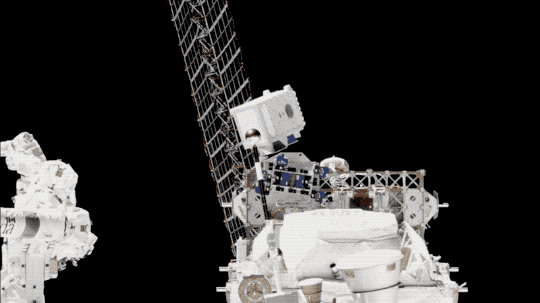
But how can we use these X-ray pulses as navigational tools? Enter SEXTANT, or Station Explorer for X-ray Timing and Navigation Technology. If NICER was your phone, SEXTANT would be like an app on it.
During the first few years of NICER’s observations, SEXTANT created an on-board navigation system using NICER’s pulsar data. It worked by measuring the consistent timing between each pulsar’s pulses to map a set of cosmic beacons.
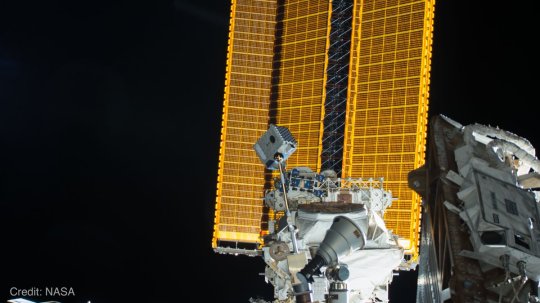
When calculating position or location, extremely accurate timekeeping is essential. We usually rely on atomic clocks, which use the predictable fluctuations of atoms to tick away the seconds. These atomic clocks can be located on the ground or in space, like the ones on GPS satellites. However, our GPS system only works on or close to Earth, and onboard atomic clocks can be expensive and heavy. Using pulsar observations instead could give us free and reliable “clocks” for navigation. During its experiment, SEXTANT was able to successfully determine the space station’s orbital position!

We can calculate distances using the time taken for a signal to travel between two objects to determine a spacecraft’s approximate location relative to those objects. However, we would need to observe more pulsars to pinpoint a more exact location of a spacecraft. As SEXTANT gathered signals from multiple pulsars, it could more accurately derive its position in space.
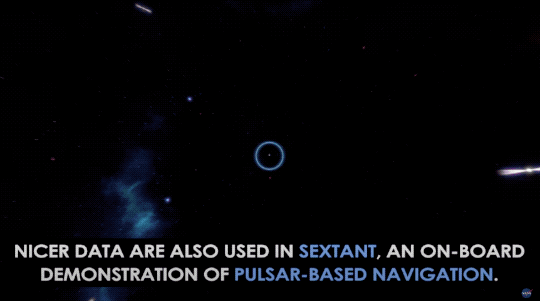
So, imagine you are an astronaut on a lengthy journey to the outer solar system. You could use the technology developed by SEXTANT to help plot your course. Since pulsars are reliable and consistent in their spins, you wouldn’t need Wi-Fi or cell service to figure out where you were in relation to your destination. The pulsar-based navigation data could even help you figure out your ETA!

None of these missions or experiments would be possible without Jocelyn Bell Burnell’s keen eye for an odd spot in her radio data decades ago, which set the stage for the idea to use spinning neutron stars as a celestial GPS. Her contribution to the field of astrophysics laid the groundwork for research benefitting the people of the future, who yearn to sail amongst the stars.
Keep up with the latest NICER news by following NASA Universe on X and Facebook and check out the mission’s website. For more on space navigation, follow @NASASCaN on X or visit NASA’s Space Communications and Navigation website.
Make sure to follow us on Tumblr for your regular dose of space!
#NASA#pulsar#Jocelyn Bell Burnell#spaceblr#space#star#neutron star#deep space#telescope#navigation#universe#astronomy#science
4K notes
·
View notes
Note
(To Ψ)
How did y'all manage to determine/estimate the shape of the Far Plane? Is there any way of "measuring" or tools to help with that?
So, this one is undoubtedly an interesting question, though the answer is a little difficult and not what I would call satisfactory. Sometimes any good scientist must admit they do not know the entire answer. To the best of my geographic expertise and available data, the Far Plane doesn't really seem to conform to any known "shape," and to date we have yet to discover any actual edge to the plane. We have however observed areas that are not accessible through seemingly real windows and doors, which we have dubbed "white holes," but the Far Plane continues on in other or even the same directions despite these.
The Far Plane also does not conform to our Euclidean understanding of three-dimensional spaces, with many rooms and entities existing in circumstances that would otherwise be impossible. This makes any two or even three-dimensional map inadequate to display the intricacies we have observed. Whatever documents you may see that try to display the Far Plane in relation to our reality are theoretical diagrams that attempt to explain its specific intrusions and postulate about its extent.
Most of what I use to help survey the places we can access in the Far Plane consists of LIDAR technology that can be mounted on relatively inexpensive drones if need be. These radars can be used to map out both interiors and the outdoor landscapes with waves of light that bounce off surfaces. This is adequate for most of my research, though any closer examinations generally require other methodology.
-Ψ
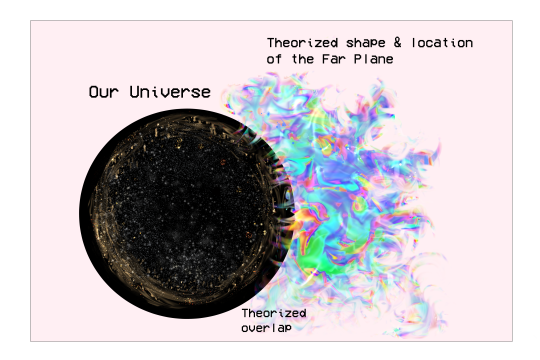
230 notes
·
View notes
Text
From Sharon Astyk on Facebook:
Folks, if you haven't been wearing a mask regularly or consistently, but who oppose this administration I want to encourage you to start (folks who have been wearing them all along, let this one go, because this isn't about you.)
I know, I know, you don't want to - you don't want to be harassed, you've had covid twice and it wasn't that bad, you aren't that worried, so why would you do that?
1. Wearing a mask in public means that people who are protesting masked are normalized. If there are many people wearing masks in public spaces, they can't identify who is resisting easily. If masks are a proxy for resistance, as governments are calling them, then it is rather like the story of King Christian of Denmark donning the yellow star. So if you want to protect and support resistors, you can mask.
2. We are on our own with disease protection. RFK jr has been very clear he plans to make vaccines incredibly inaccessible to most Americans. Right now there are circulating cases of measles, TB, mumps, covid and below the radar bird flu (yes, that too) as well as other stuff. No one is going to give you a vaccine to prevent disease. No one is going to tell you when you or your kids are exposed to measles or tuberculosis or bird flu. They are not testing, they are not recording data, they are not seeking to protect you. If you don't protect yourself, no one will.
While I strongly recommend everyone get any boosters or vaccines they need, in a society with low vaccination rates, and permeable vaccines that let some cases through and wane with time, a vaccine-only strategy is not viable. You cannot tell when you are exposed to these diseases, and you will just get sick, and some people will die.
No one is going to tell you when Bird flu starts spreading human to human on any scale. We will find out when a bunch of people get very sick and die - and I don't want you to be among them. No one is going to tell you when a kid has measles at your school in many states now, and you don't know if your vaccine from 30 years ago is still holding. 38% of cases in Ontario have been in vaccinated adults.
Vaccines and air cleaning and far UV light, and smaller classroom densities (yeah right) are all good tools, but the most reliable one is an N95 or equivalent mask.
3. The opinion of Trump, RFK jr and the rest of this administration is that disabled or medically vulnerable people should just die. They've been very clear, and we've seen it in how they cut support, research, to cancer, sickle cell disease, diabetes, alzheimers, etc... and how they talk about people with disabilities like autism.
They are rapidly and painfully stripping resources like SSDI, Medicaid, Special Education support programs and funding, research for rare cancers and diseases, testing that would let you know if your baby has a condition...you name it.
A 14 country study just showed that after 5 1/2 years of the pandemic, 25-30% of people who have covid have long covid. And we've known that was going to happen - that's almost exactly the same stats we've seen in other studies. By your third infection, your risk of long covid is up around 30%.
And while our support systems have been broken and fraying for a long time, they are simply DEAD now. You won't get SSDI. You won't get health care for your disability. You may not get treatment for your cancer. Your Alzheimers meds may not be covered. RFKjr thinks the answer to type 2 diabetes or mental health issues is a work camp.
We know that some viruses, including covid are oncogenic (the obvious one is the HPV virus, and the vaccine prevents cervical cancer perfectly), which means they up your risk of cancer. We know it increases your risk of dementia, and the rate at which dementia progresses. We know that covid can reactivate EBV and TB.
We also know that measles wipes your immune system for three years - including your vaccines. If you get measles, and you cannot get vaccinated again, you could die of diptheria, tetanus, mumps, etc...
You cannot afford to be newly disabled right now. They want people dead or unable to resist. DO NOT COMPLY IN ADVANCE. No one is protecting you from this. So protect yourself - this is as much a step as getting your passport or supporting your food pantry.
4. Because they are so clear that they have eugenicist intents towards disabled people, as well as non-white folks, wearing a mask is an act of solidarity with them.
Statistics have always shown that non-white people are more likely to wear masks than white folks, mostly because they know perfectly well that the safety net has a lot of huge holes in it. They are often worn by people who simply cannot afford to be sick.
Moreover immunocompromised and disabled people HAVE to mask. There are also people who physically CANNOT mask, who rely on others to mask to protect them. When you put on a mask, you do two things.
1. You stand with those who must or wish to mask, and practice community care. You make it clear those lives are more valuable than your convenience. Remember, they are counting on you not to believe that and let disabled people be first targets.
2. You make protest, activism and resistance safe and accessible for millions of people who otherwise cannot participate in standing up to our goverment. You help cross crucial thresholds for engagement by making resistance fully accessible.
My father, who is in his middle 70s and disabled, repeats the mantra regularly that these motherfuckers are not going to get to kill him, no matter how hard they try. That he has no intention of dying under Trump. He's going to stay alive and piss them off and fight back until he gets to piss on their graves.
If you want to do that, you have to wear mask. Its that simple. Masking is fighting back. Masking is solidarity. Masking protects you and everyone. Masking is resistance. Wear a mask in public.
https://www.facebook.com/share/p/1FT62GK2av/
@covid-safer-hotties
229 notes
·
View notes
Text
New Blood, Old Regards
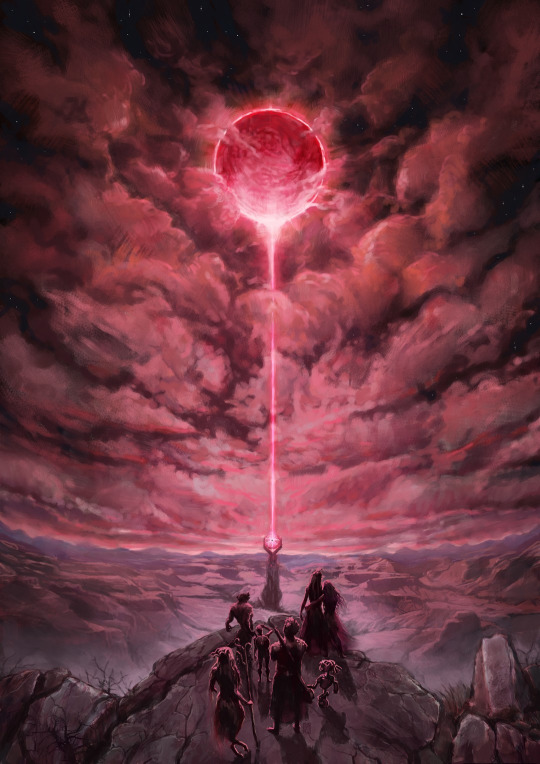
Thanks to @eyeofthenewt1 for this art piece!
Greetings! Although the Stats Team is still in a state of retirement, we’ve periodically updated several of our Campaign 3 Running Stats categories and galleries thanks to the efforts of a new team of data collectors. This team, consisting of Archivists Astral, Ethereal, Fey, and Shadow, have been preparing since the beginning of the year to launch their own site, and that day has come! With that, we’re pleased to present:
The Omen Archive
Although they have been providing CritRoleStats updates for our Campaign 3 records, their site will be its own thing with its own tools, toys, and focuses, such as graphics derived from their own databases of data. Please visit them at their website, reach out to them, and check them out on their various social media pages:
Website: https://www.omenarchive.com/
Twitter/X: https://twitter.com/omenarchive
Bluesky: https://bsky.app/profile/omenarchive.bsky.social
Instagram: https://www.instagram.com/omen_archive/
Tumblr: https://omenarchive.tumblr.com/ ( @omenarchive )
CritRoleStats will continue to update our databases and running stats pages with the data we receive from the Omen Archive until the end of the campaign, so that anyone from academics to casual fans have access to a complete catalogue of three campaigns worth of data. After that, our site will be completely (accessibly) archived, and our legacy will be carried on entirely by projects like the Omen Archive.
Thanks Are In Order
Outside of our final livecast, we realize we went out without the proper thanks to the community members who helped us grow. We’d like to take this opportunity to give credit where we feel it’s due.
We’d like to thank the team at Critical Role for their support over the years, with special thanks to Dani Carr for both her wonderful spirit, tenacious work ethic, and the marvelous send-off she gave us.
We’d like to thank the creators in the community. Thank you to the artist community for letting us feature your wonderful talent to give vibrancy to the numbers and words we’ve filled. Thank you to the information gathering community, from the wiki workers to the meta analysts, for giving your time to help make Critical Role more accessible. Thank you to the academics for finding value we didn’t know we had in our work. Thank you to everyone who creates in this community, whether your medium is music, words, stats, or art; whether you share for a large audience or for the joy of your private home or table; whether you encourage others with high presence, or quietly inspire and support from the shadows. Your creation makes the world a more interesting place.
We’d like to thank both our patrons and our Ko-Fi supporters for allowing us to carry on for as long as we have, and to make sure our work can continue to reach those who want to be informed and inspired. Thank you to our regular visitors, as well; traffic is supportive in several ways!
Thank you to those who have been with us, whether it’s the very beginning, sometime in the middle, or even if you’re tuning in just now. Your patronage and your expression of value in our work has been a blessing. (Thanks for the 1d4.) We’d also like to thank everyone who has continued to visit the site in spite of the lack of regular content creation on our part, and are grateful that so many of you are still finding use in the previous campaigns’ worth of data, as well as the current one.
We love you all very much. Now, back to retirement!
628 notes
·
View notes
Text
Interview to celebrate the opening of the Ryoko Kui Exhibition
About Delicious in Dungeon: Story making
Q1. Your first long-running series has lasted for about 9 and a half years. Has it been different from your previous experience drawing short stories?
A1. Compared to short stories, the series has been easier because the same characters appear each time. But I was surprised to find that I got tired of drawing the same characters too many times.
Q2. You have said before that the overall structure of the story was decided before serialization began, but how much of that had you communicated to your editor? Also, what kind of communication did you have during the series production?
A2. The goal was something we discussed and had decided on from the beginning. The goal itself was simple, but the path to get there was more difficult and took longer than imagined.
Q3. Regarding the overall story concept and development, did you write out or put anything down in writing (such as the plot)?
A3. I did, but it was simple.
Q4. Did you come up with the dishes based on the monsters you wanted in the story? Or did you come up with the monsters based on the dishes?
A4. It depended on the story, but usually the story came first followed by the monsters or food. I feel like that was most often the order.
Q5. As you progressed in drawing the series, what elements of the characters, story, or world expanded or grew in the most unexpected way?
A5. Nothing particularly unexpected perhaps. When I used to draw web manga, I tended to think up inconsequential settings. So, from the beginning I tried to restrain myself as much as possible and not expand too much. I was surprised when my editor said "Let's expand it more," in the second half of the series.
Q6. "Delicious in Dungeon" starts with a relatively simple setting, but as the series and the labyrinth exploration continues, the map slowly expands little by little in the readers' minds. It becomes more three-dimensional, revealing the secrets of the world, and taking on a multilayered structure. Are there any sources that you used as a reference, or which influenced you in creating this multilayered structure?
A6. A long time ago, when I was working on my personal web manga (fantasy), I drew it however I wanted, thinking that "Only people who can read this will read it," but I regularly received feedback that it was "unreadable", so I tried to make it as easily. accessible as possible.
Q7. The series combines many elements, including "fantasy", "gourmet", "battles", and "puzzle solving", but I think it's also important that it is a "comedy" which makes people laugh. Could you let us know if you have a creative commitment towards depicting humor?
A7. My hopes are that I can make it fun for people to read.
[page 5]
About Delicious in Dungeon: Drawing manga
Q1. Please tell us about the drawing tools you currently use, both digital and analogue.
A1. In terms of analogue tools, I use a light box, a G pen, a round pen, and a brush pen. And for digital, I use CLIP STUDIO PAINT and a Wacom LCD tablet. Screentone pasting is always done on the computer, so ultimately it all ends up as a digital manuscript.
Q2. Do you have any rules or reasons for using digital and analog separately?
A2. I'm always looking for ways to draw better and save time, so the exact approach is probably different for almost every chapter. Personally, I feel that analogue methods create more appealing lines, but I feel like digital saves time, so maybe I'll do a digital rough sketch and do the inking by hand… I might have been using a G pen, and maybe I'll try out a turnip pen, or this time I'm short on time so I'll draw it entirely digitally, but with digital I can redo it over and over, so maybe analogue is still faster, and so on and so forth. I'm indecisive in this way and so haven't developed a consistent process.
Q3. I understand that you prepare 3D data for your assistants to draw the backgrounds. What kind of data did you make for "Delicious in Dungeon" ?
A3. You could call it 3D, but it's not a proper model, just something to help with the rough sketching. I line up cubes to share the perspective and sense of scale, and they use it as a reference.
Q4. At the beginning of the series, the characters and backgrounds were somewhat simply drawn, and it seems like they became richly detailed over the progression of the story. What was your intention behind using these different styles?
A4. It's simply that my technique isn't stable. I thought I'd put a lot of effort in at the start. I remember being confused when my editor asked me to add more in to the drawing, and I wondered "Where…?"
Q5. Thinking about the food, were there any menu illustrations that you were particularly satisfied with, or which you struggled with?
A5. I've never liked my own food illustrations. But the times when I read other people's manga and thought "That looks delicious," I think it's been more an influence of the movement, the staging, and the situation than the drawings.
Q6. For the world maps and the terrain of each continent, did you refer to any maps of the real world? I feel like the shape of the 'island' is similar to the shape of Fukuoka Prefecture or Kyushu.
A6. I didn't reference any specific geography, but I did try to put thought into things like whether a developed city would be near a river or the sea, and what the coastline would look like. I'm pleased if it feels similar to a real place, because it means my interpretation was pretty accurate.
About Delicious in Dungeon: Other
Q1. Which is your favorite monster?
A1. Nightmare.
Q2. I'm sure you have received a lot of feedback from readers in countries and regions outside of Japan. Please tell us if there was anything from them that made you happy, was unexpected, or which made a lasting impression on you.
A2. When you play foreign games, there are times when you think "Why did they translate it into Japanese like that?" But having been on the side of having something translated, I've realized some things are unavoidable, or endless, and there are many things that don't matter either way from the author's perspective, so it was interesting.
About Ryoko Kui's short story collections and herself
Q1. Dragons are a consistent and important motif in your work. Was there any particular work or experience which inspired this? Also, are there points about drawing dragons which you find interesting or have had to work hard on?
A1. It's less about liking dragons, and more that I'm interested in the worlds in which dragons exist. When I draw dragons, the depiction in itself has a sweet feeling to it. I have never had a pet reptile, so I don't have a very good understanding of them.
Q2. Unomiya University in your story "The dragon's school is on top of the mountain" has a Faculty of Dragons, Department of Environmental Studies, and Department of Technology Studies, and a Faculty of Veterinary Medicine. If you were to enroll in the university, which department or faculty would you like to enter?
A2. I probably wouldn't be accepted….
Q3. The collection includes a short story staged as an essay manga. Are you a fan of essay manga? Please tell us about any genres of essay manga that you like.
A3. I love all kinds of essay manga. I read them often.
Q4. If you were to make your own game, what kind of game would you like to make?
A4. I prefer being a player when it comes to games.
Q5. When did you first start drawing illustrations (doodles)?
A5. I don't exactly remember when I first drew a picture, but I think I started drawing manga around the fourth or fifth grade of elementary school. in my notebooks and had my friends read them.
Q6. What is the most fun part about drawing manga?
A6. Every part is fun and hard in its own way.
Q7. Please tell us if there is anything you "just can't stop no matter what".
A7. My procrastination habit.
Q8. Could you please tell us if there's something you want to draw now?
A8. I've been working continuously since the serialization, so I'd like to take about 2 to 3 months to just draw whatever I want.
#Dungeon Meshi#qna#Ryoko Kui#longpost#long post#ryoko kui exhibition#delicious in dungeon exhibition#interview#delicious in dungeon#dunmeshi#exhibition
286 notes
·
View notes
Text
“You Talk Too Much (And I Like It)”
Tech x Reader
You always had a lot to say. About everything. Planets, food, stories from childhood, dreams you had the night before, conspiracy theories, music recommendations, the absolute travesty that was the vending machine on Cid’s ship. Most people tuned you out after five minutes. Echo smiled politely. Wrecker nodded along even if he didn’t follow. Hunter gave that big brother, I’m listening but please stop look. But Tech—
Well, Tech never said much at all.
You were sitting beside him in the Marauder, your legs crossed on the seat, recounting—quite animatedly—a story about the time you tried to fix a speeder bike and ended up launching it through your neighbor’s wall. Your hands flailed in the air like you were directing a play.
“And I swear, it wasn’t even my fault! The wiring was labeled wrong, and boom! Gone. Just through the wall. Like—whoosh!” You gestured dramatically. “And the guy didn’t even get mad! He just looked at me like, ‘Again?’ Like it was normal! I mean, do you know how often something has to happen for someone to say ‘again’ like that?”
You laughed at your own story, expecting the usual silence or maybe a smirk.
But Tech didn’t even glance away from his datapad. “Statistically, it would take three prior incidents to normalize an event to that degree of resignation.”
You blinked.
“What?”
“Assuming he’s of average emotional intelligence,” Tech continued, typing something, “and factoring in a baseline tolerance for property damage, he would need to experience approximately three similar accidents before responding without distress.”
You stared at him for a moment, a grin creeping onto your face. “That’s… actually really interesting.”
“I ran a simulation once on behavioral desensitization. It was… enlightening,” he added, finally sparing you a glance over his lenses.
“Tech,” you said, leaning in slightly, “do you actually listen when I ramble?”
He looked confused. “Why wouldn’t I?”
“I dunno… I talk a lot. Like, a lot a lot. You’re always so quiet.”
“I am processing,” he replied. “You provide a considerable amount of verbal data, but I do not find it unappealing.”
“…That’s the nicest thing anyone’s ever said about me talking too much.”
He tilted his head, brows slightly raised. “It is?”
You laughed, this time softer. “You’re kind of weird, Tech.”
“Correct.”
“But I like that.”
He hesitated for a beat, then reached into his tool belt and held out a tiny, modified comm unit. “I made this for you.”
You blinked. “What is it?”
“It’s a personal recorder. For your stories. In case I’m not around to listen… or if you wish to remember them later.”
Your heart stuttered.
“Tech… that’s the sweetest, nerdiest thing anyone’s ever done for me.”
He adjusted his goggles. “You are enthusiastic and loud. But I find the consistency of your presence… statistically comforting.”
You bit your lip to keep from grinning too hard.
“Wanna hear another story?” you asked.
“I’ve already adjusted the comm’s storage capacity for it.”
You didn’t know how to describe the warmth blooming in your chest—but you didn’t need to.
Tech already had a formula for it.
⸻
It started with the recorder.
Then came the noise-canceling earpieces—not for him, but for you. “In case you ever want silence but don’t want to stop talking,” he’d explained, eyes glued to a schematic, oblivious to how much your heart melted.
He began cataloguing your favorite snacks and replicating them with a portable food synthesizer. “I’ve programmed your preferred balance of salt and sweetness,” he said one night, handing you a makeshift granola bar that tasted weirdly perfect.
The best part? He never made a big deal about it. Just slipped things into your life like you’d always been part of his code.
One evening, after a mission that left the team bruised but alive, you found yourselves alone in the cockpit of the Marauder. The others were sleeping, recovering. You weren’t tired. You rarely were when Tech was nearby.
You sat cross-legged in the copilot’s seat, chewing absently on a snack bar, eyeing him as he fiddled with his datapad.
“Tech,” you said, drawing his attention with a sing-song tone.
“Hm?”
“You always listen to me talk about my stuff. But you never tell me about yours.”
He didn’t look up. “That is because my interests are largely theoretical and statistically uninteresting to the average person.”
You snorted. “Okay, first, I’m not average. And second—says who?”
He paused. “I… suppose I assumed.”
“Well, you assumed wrong. Come on, tell me something. Anything. What do you like, Tech?”
He shifted in his seat, clearly uncomfortable. “I like many things. Theoretical physics, starship schematics, linguistic anomalies…”
You leaned in. “No, not like a list. Talk to me. Like I talk to you.”
He looked at you. Really looked. You’d never seen him nervous before. But this? This was vulnerable. And Tech didn’t do vulnerable. Not in the usual sense.
Still, after a moment, he gave a small nod.
“I find… gravitational lensing phenomena quite fascinating,” he began, almost shyly. “When a massive object distorts space-time, it bends light around it. It allows us to see stars that would otherwise be hidden. It’s a rare glimpse into the unreachable, a way to observe what we otherwise could not.”
You blinked, taken aback by the sudden spark in his voice.
“And—when you combine that with redshift patterns and the curvature metrics of distant galaxies—”
He was off.
Tech’s eyes lit up behind his goggles. His hands moved as he talked, describing invisible models in the air. The way he spoke was fast, clumsy, full of jargon, and absolutely beautiful. He was so excited. The same way you were when you told your stories.
You didn’t interrupt. You didn’t tease. You just smiled and let him go.
Eventually, his words slowed, and he caught himself, clearing his throat.
“I… apologize. I may have over-answered your question.”
“No,” you said softly. “You were perfect.”
His eyes met yours.
You reached over and touched his hand. He froze, then slowly turned his palm to hold yours.
“Tech,” you murmured, “when you talk like that, it makes me want to kiss you.”
He blinked. “Statistically, that is a highly favorable reaction.”
You grinned. “Tech.”
“Yes?”
“I’m gonna kiss you now.”
He hesitated a beat. “Proceed”
And when your lips touched his, soft and warm and a little clumsy, he exhaled like it was the first time he’d let go of logic and just felt something.
Afterward, still holding your hand, he said, “You make even chaos… feel structured.”
And you decided right then that you were never going to stop talking. Because if you kept talking long enough, Tech would keep listening—and maybe, just maybe, he’d keep answering too.
#clone trooper x reader#clone wars#star wars#star wars fanfic#star wars the clone wars#clone x reader#the bad batch x reader#clone force 99#tech the bad batch#tech x reader#tbb tech#tech tbb#sw tbb#tbb fanfiction#tbb x reader
117 notes
·
View notes
Text

Pentagon’s Pizza Index has accurately predicted 21 global crises since 1983
As tensions rise in the Middle East, a curious, crowd-driven theory known as the “Pentagon Pizza Index” has caught fire online.
On June 12 and 13, users on X (formerly Twitter) reported a sudden spike in pizza deliveries near the Pentagon and Department of Defense in Washington, D.C., sparking speculation that the United States may be quietly entering crisis mode behind closed doors.
The timing? Just hours before Israel reportedly struck targets in Iran in response to Tehran’s earlier drone and missile attacks. And once again, pizza orders were booming.
Cold war roots of the pizza theory. What began as a Soviet spy trick is now a digital-age meme
The idea isn’t new. During the Cold War, Soviet operatives observed pizza delivery activity in Washington, believing it signalled crisis preparation inside U.S. intelligence circles. They coined it “Pizzint” — short for pizza intelligence.
This tactic entered public lore on 1 August 1990, when Frank Meeks, a Domino’s franchisee in Washington, noticed a sudden surge in deliveries to CIA buildings. The next day, Iraq invaded Kuwait. Meeks later told the Los Angeles Times he saw a similar pattern in December 1998 during the impeachment hearings of President Bill Clinton.

As former CNN Pentagon correspondent Wolf Blitzer once joked in 1990, “Bottom line for journalists: Always monitor the pizzas.”
WWIII warning: What is the Pentagon Pizza Index today? A meme, an OSINT tool, or a symptom of digital-age paranoia?
The modern Pentagon Pizza Index is tracked through open-source intelligence (OSINT) tools. These include Google Maps, which shows real-time restaurant activity, and social media observations. Pages like @PenPizzaReport on X have dedicated themselves to watching for abnormal patterns.
On 1 June 2025, the account posted, “With less than an hour to go before closing time, the Domino’s closest to the Pentagon is experiencing unusually high footfall.”
A few hours later, reports emerged of a fresh escalation between Israel and Iran. For believers in the theory, it was yet another sign that something bigger was underway.
The April 2024 pizza spike. A recent example that reignited interest
The most notable recent instance occurred on 13 April 2024, the night Iran launched a massive drone and missile strike against Israel. That same evening, screenshots from delivery platforms showed pizzerias around the Pentagon, White House, and Department of Defense tagged as “busier than usual.”

Multiple Papa John’s and Domino’s branches reported increased orders. The correlation prompted viral memes and renewed interest in the theory.
According to Euro News, a user on X posted on 13 June 2025, “The Pentagon Pizza Index is hiking.”
Inside the logic: Why pizza? Food, fatigue and national security
The concept is deceptively simple. When military staff face a national emergency, they work longer shifts and can’t leave their posts. They need quick, filling food — and pizza fits the bill.
Studies in behavioural psychology show that under stress, people prefer calorie-dense, familiar comfort foods. During high-alert operations, officials may work 16–20 hour days. That creates a visible consumption spike that outsiders can track.
And because platforms like Google and Uber Eats share real-time data on restaurant activity, amateur analysts can monitor these patterns — no hacking required.
World War III: Pizza as a proxy for preparedness. It’s not perfect, but it’s consistent
The Pentagon Pizza Index isn’t a foolproof system. It could easily be triggered by something mundane: a long staff meeting, a software glitch, or a nearby college football game.
That’s why modern OSINT analysts often cross-reference pizza spikes with other indicators — like unusual aircraft movements, ride-hailing activity, or power usage near government buildings. When multiple signs align, it suggests more than coincidence.
As a senior analyst put it: “You can’t bank a war call on a pizza. But if the Pentagon’s burning the midnight oil and feeding everyone, it’s worth a second look.”
Official silence, public curiosity. What the US government says — and doesn’t say
Despite the chatter online, the US government has made no mention of pizza deliveries as indicators of crisis.
Responding to speculation about American involvement in Israel’s airstrikes on Iran, Republican Senator Marco Rubio said:
“We are not involved in strikes against Iran, and our top priority is protecting American forces in the region. Israel advised us that they believe this action was necessary for its self-defence.”
Still, the Pentagon’s silence on the pizza theory hasn’t stopped internet users from speculating.
Humour meets anxiety in the age of digital vigilance
In an age where open-source tools let ordinary people track the movement of jets, ships, and even pizzas, the Pentagon Pizza Index sits at the bizarre intersection of humour and fear. It turns snack food into a warning system.
It’s also a reminder: not all intelligence requires a badge. Sometimes, the clue might be just down the road — in a Domino’s queue.
Whether you see it as absurd or insightful, one thing is clear: when the pizzas fly, people pay attention.
Daily inspiration. Discover more photos at Just for Books…?
74 notes
·
View notes
Text
Also preserved in our archive
Not mentioned in the article, but part of the reason for the decline in Paxlovid's efficacy is covid evolving for antiviral resistance because we do not utilize a full course of the drug when it is used. Five days is 3 to 5 days too short a course for most people to fully clear an infection before the drug wears off, and since it's a viral inhibitor, not a true anti-viral, that means any covid left just goes back to whatever it was doing, only now it's epigenetically primed to evolve to survive similar experiences. More cases treated by not enough paxlovid leads to more rebounds leads to covid we can't even treat. This is why we have to mask and clean the air. Our tools to fight covid only work if we all use all of them consistently. Until then, wear a high quality respirator and avoid high risk scenarios whenever possible.
#mask up#public health#wear a mask#wear a respirator#still coviding#pandemic#covid#covid 19#coronavirus#sars cov 2#paxlovid
84 notes
·
View notes
Note
Genuine question: so we know that Cybertronians react to certain Earth substances. For example, Knockout reacts to pepper spray being sprayed in his optics. So, if we go by that logic, then they could be effected by other chemical compounds, like Scarecrow's Fear Toxin. So that raises the question, if the Autobots and Decepticons of TFP were under the influence of the Fear Toxin, what would they see? What would be there deepest, darkest fears?
-Optimus would see a dead and desolate Cybertron and his teammates and enemies alike are all dead. Everything is lost. And he is all alone. He is the last cybertronian alive and he's being tormented by shadowy phantoms that remind him of what a failure he is, that he couldn't save anyone.
-Ratchet sees all the people he failed to save. Every bot that ever landed on his operating table and who did not walk away from it. They are staring at him, looking just like they did when they died and they are all blaming him for their deaths. "Why didn't you save us, Ratchet?" "We wanted to live, we trusted you to fix us."
-Bumblebee's visions consist of Megatron killing everyone he cares about. No matter what Bee does, he can't stop him. He starts with Optimus, then Bulkhead, Ratchet, Arcee... and then he goes on to the humans. And Bumblebee is powerless to do anything but watch and scream.
-Bulkhead experiences the fear of rejection. Everyone he cares about are disappointed in him, loathes him, hates him for being such a failure. They are mocking him, calling him weak and stupid and blaming him for all their failures. And the worst is, Bulkhead believes them.
-Arcee sees Tailgate and Cliffjumper's reanimated corpses. They are hunting her, controlled by Airachnid who orders them around like dogs. They want to tear her apart, limb by limb and turn her into another undead for Airachnid to control so she can sick Arcee on her teammates and friends.
-Megatron, as fearless as he claims himself to be, sees himself falling apart. Part after part until he's left weak and voiceless. He has always found comfort in his strength and ability to command. It's what defines him. To be left without these tools means that he can do nothing. He can't fight back, he can't order his soldiers. He's just deadweight.
-Starscream's nightmare is quite simple. He hallucinates enemies all around him, that they are chasing him with the intention to kill him. Some look like bots he know, enemies and allies alike, but most are just faceless shadow-monsters. And no matter how exhausted Starscream is, he can't stop running or else they will get him.
-Soundwave sees Megatron abandoning him. The decepticon leader blames him for a mission gone wrong and then just... leaves. Doesn't even look back at him. And even as Soundwave reaches out to him, tries to stop him, he just can't reach Megatron. The distance between them grows bigger and bigger the further he reaches out.
-Breakdown has a particular reaction to the Fear Toxin where he believes he can no longer move, that he is paralyzed. It's a purely mental thing, there's nothing actually wrong with his body, but the conviction is so strong he can't move an inch.
-Knockout hallucinates himself rusting. It starts with a simple scratch on his forearm but when he touches it, it suddenly spreads with frightening speed. The rust ages him thousands of years in an instant, chipping away at his red paint job and creating small holes in his armor that won't stop growing.
-Shockwave sees all his research, his hard work, disappearing before his very eye. Data files corrupting and deleting, experiments self-terminating. Everything, gone in mere seconds. (Personally I think Shockwave wouldn't actually fall for any of this and would just watch it happen like "fascinating, it's almost believable".)
-Airachnid's hallucination is almost identical to Starscream's. She's also being chased but unlike Starscream, who mostly sees faceless shadow-monsters, Airachnid sees all her past victims. Dead, rusting and decaying, looking like they did when they died or like they just crawled out the grave.
#transformers imagine#transformers prime#optimus prime#bumblebee#ratchet#bulkhead#arcee#megatron#soundwave#knockout#breakdown#shockwave#airachnid
135 notes
·
View notes
Text
Critical thinking tip: Beware of false equivalencies!
A false equivalence is a claim that two or more things that might appear superficially similar are actually the same, when in reality they aren't really comparable at all.
An example of this is when young Earth creationists (who proclaim that Earth is only 6000 years old and everything in Genesis happened literally) claim that they are simply just interpreting the same facts differently from other scientists, as if it's just like the famous rabbit-duck illusion where one is equally justified in seeing either a rabbit or a duck.
But the reality is that young Earth creationism simply doesn't work like this. Instead, their "science" is based on cherry picked data and ad hoc reasoning to try and dismiss the many facts real scientists discover that constantly show that young earth creationism just isn't very likely. Radiometric dating, tree ring data, and geological data consistently show that the Earth is quite a bit older than 6000 years. YEC responses to this often boil down to "well maybe physics just worked differently back then" (here's one example of this), and of course they never do any real tests or research to show that this is a real possibility. Moreover, they invent some absolutely bizarre claims to supposedly disprove evolution - like falsely claiming that the Second Law of Thermodynamics prohibits it.
All of this shows us that YECs aren't just scientists who interpret the data correctly - they are politically-motivated spin doctors using the aesthetic of science to make themselves look more credible. This is why when someone claims that their fringe idea is just as scientifically credible as a mainstream one, you have to ask yourself if that's really true. Are they following the scientific method and accepting results that don't align with what they wanted? Or are they engaging in special pleading and relying on fake evidence?
(By the way, I recommend Gutsick Gibbon's YouTube channel as a resource debunking YEC claims!)
Another form of false equivalence is when someone claims that mystical experiences and intuition are just as valid for determining what's going on in the world as genuine scientific research. But when we consider that something as wrong as World Ice Theory came from an apparently mystical dream, we have to consider that these kinds of experiences can be extremely misleading. We also know that professional psychics' yearly predictions have a high rate of failure. (Some examples. More examples. And some more examples. And even more examples!) We know that a tool such as the Ouija board can enhance memory recall, but when we're really honest about the accuracy of mystical information-gathering means, we have to admit that they're just no substitute for research and study.
So when someone asserts that two things are basically the same, or are fundamentally equivalent or fungible, ask yourself - are they really, though? And then do the research to find out!
#critical thinking#logic#logical fallacy#false equivalence#false equivalencies#creationism#young earth creationism#mysticism#psychic predictions
57 notes
·
View notes
Text
How Authors Can Use AI to Improve Their Writing Style
Artificial Intelligence (AI) is transforming the way authors approach writing, offering tools to refine style, enhance creativity, and boost productivity. By leveraging AI writing assistant authors can improve their craft in various ways.
1. Grammar and Style Enhancement
AI writing tools like Grammarly, ProWritingAid, and Hemingway Editor help authors refine their prose by correcting grammar, punctuation, and style inconsistencies. These tools offer real-time suggestions to enhance readability, eliminate redundancy, and maintain a consistent tone.
2. Idea Generation and Inspiration
AI can assist in brainstorming and overcoming writer’s block. Platforms like OneAIChat, ChatGPT and Sudowrite provide writing prompts, generate story ideas, and even suggest plot twists. These AI systems analyze existing content and propose creative directions, helping authors develop compelling narratives.
3. Improving Readability and Engagement
AI-driven readability analyzers assess sentence complexity and suggest simpler alternatives. Hemingway Editor, for example, highlights lengthy or passive sentences, making writing more engaging and accessible. This ensures clarity and impact, especially for broader audiences.
4. Personalizing Writing Style
AI-powered tools can analyze an author's writing patterns and provide personalized feedback. They help maintain a consistent voice, ensuring that the writer’s unique style remains intact while refining structure and coherence.
5. Research and Fact-Checking
AI-powered search engines and summarization tools help authors verify facts, gather relevant data, and condense complex information quickly. This is particularly useful for non-fiction writers and journalists who require accuracy and efficiency.
Conclusion
By integrating AI into their writing process, authors can enhance their style, improve efficiency, and foster creativity. While AI should not replace human intuition, it serves as a valuable assistant, enabling writers to produce polished and impactful content effortlessly.
38 notes
·
View notes